The Palisades:
Birthplace of Skateboarding
By Braden Walker

The Palisades News
September 12, 2018
“The history of skateboarding basically went back to Dogtown, plus the two films “Dogtown and Z-Boys” and “Lords of Dogtown” had come out. So they were all famous and getting all this credit, and there was at most one mention of the 60s and skateboarding even existing,” says Tim Keller with frustration. The original Palisades Skateboard Team captain is here to set the record straight on the real history of skateboarding and where the sport is heading tomorrow.
The Palisades in the 1960s had become the birthplace of something that would later be overshadowed for decades. Before the rise of Dogtown and the infamous Z-Boys, there was a small group of Pali locals marring the first tracks on the perfectly crafted “bowls” in school playgrounds and parking lots throughout the Palisades. They called this sidewalk surfing, and it was the very start of skateboarding as we know it today.
With the rise of surf culture in Southern California after the 1959 film “Gidget,” kids in the area started searching for the perfect wave. When it couldn’t be found at sea, they would find other activities to partake in--such as roller-skating.
A then-young Palisades local, Tim Keller remembers the days he would go down to the roller rink on the Santa Monica Pier to figure-skate and enter short-track races. Soon those shoe skates would be put to another use--to make his first skateboards. “We all started doing it. We were taking the metal wheels off the bottom of our outdoor shoe skates and we would nail them to the bottom of a 2x4. Initially it had a vertical piece attached to the front that would come up with a handlebar that was also a 2x4, so they were pretty rudimentary and barely worked,” says Keller. “We” of course is referring to Keller and his group of radical comrades who would later become known as the Palisades Skateboard Team. Soon thereafter, metal wheels became clay wheels from indoor shoe skates, the vertical piece and handlebars were removed, and the board shapes turned from squared off 2x4s to what looked like miniature surfboards--stringers and all--revolutionizing the new sport and opening the doors to new opportunities.
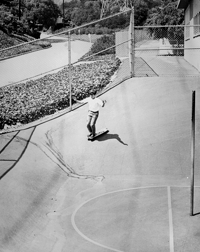
One sunny afternoon in 1964, Tim and his younger brother Terry gathered the group at their house on Muskingum, all with blank white T-shirts and black markers in hand. That day they would all write “Palisades Skateboard Team” on the back of those shirts, and skateboarding’s first wave had officially swelled. Being the oldest member of the group at 13, Tim knew that landing a sponsor for his newly formed team would land them better apparel and free skateboards. This sent him searching all over Southern California to find the right fit, though ultimately he wouldn’t have to look far. A man by the name of Don Burgess owned a self-titled pool company in the Palisades and enjoyed getting involved with the youth community, having two skateboarding sons of his own. Burgess had developed a non-skid coating that could be painted around pools to prevent slipping on the deck, which he quickly realized could also be applied to the top of skateboards to serve the same purpose. With this merging of worlds, Don Burgess Pools became the sponsor of the Palisades Skateboard Team.
Once the team formed, team captain Tim Keller would call other local teams and invite them out to Palisades High School for dual meets where the rules were created on the fly and the main objective was having fun. By the end of 1964, area parks departments started catching on to this trend and hosting events of their own, which led to increased awareness of skateboarding and the First Annual National Skateboarding Championships held at Anaheim in May of 1965. The Palisades Skateboard Team finished in 3rd place behind the legendary Hobie Super Surfer team in first and Gordon & Smith Surfboards team in second.
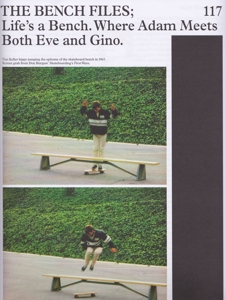
With the increased popularity and media attention of the sport, appearing on ABC’s Wide World of Sports and numerous other TV shows at the time, much concern came with the new craze. Most of the flack came from five fatal skateboarding incidents and hundreds of injuries within a span of just a couple months. This led to news media deeming the sport dangerous, scaring off the once invested parks departments, and by August 1965 skateboarding was banned in 20 U.S. cities.
This was devastating for the industry as board companies lost tens of thousands of orders seemingly overnight. It looked like skateboarding would not survive 1965. The Quarterly Skateboarder, the sport’s biggest magazine at the time, had stopped its presses and competitions were disappearing. The sport would ultimately hang on by a shoestring until 1967, when it seemed the actual death of skateboarding had finally come. Tim recounts his memories during these times, stating “my recollection is that skateboarding disappeared. It certainly wasn’t something you saw people doing much of.”
It was not until 1972 when Frank Nasworthy created Cadillac Wheels, smooth polyurethane skateboarding wheels that provided exceptional traction on asphalt and concrete, that skateboarding caught its second wave - the Dogtown era. Dogtown and the Z-Boys often receive recognition as being the pioneers of skateboarding, depicted in films such as “Dogtown and Z-Boys” (2001) and “Lords of Dogtown” (2005), although it couldn’t be further from the truth. The success of the Dogtown legend is what influenced Keller to become proactive in finding his childhood friends and compiling a story that tells the true beginnings of the sport.
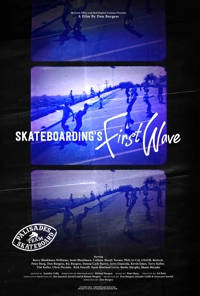
Thanks to Tim Keller and fellow PST member, Don Burgess, sponsor Don Burgess’s son, the record has now been set straight. Keller’s 2013 feature in the Palisadian-Post, “Skateboarding’s First Wave,” sparked Burgess to gather the 16mm films his dad had taken of them all skateboarding in the mid-60s. The younger Burgess had become a world-renowned Hollywood cinematographer and decided to produce and direct the 2015 film “Skateboarding’s First Wave.” The film tells the true story of how skateboarding was birthed in the Palisades and the role the Palisades Skateboard Team played in the evolution of the sport.
I asked Tim if he thinks skateboarding is here to stay. His answer gave me hope as a skateboard brand owner and passionate participant of the sport. “It’s interesting now,” he said, “because I see skateboarding everywhere. When Don and I were collaborating on the film, he was sending me various cuts of the 48 minutes of raw film as we were developing it into a movie. I would make an announcement on the PA at Raton High School in New Mexico where I was teaching, and I would show this footage after school in the library. We had a bunch of kids, boys and girls, that would all come with their skateboards to watch this stuff, so skateboarding has stuck, and I don’t think it’s going anywhere.”
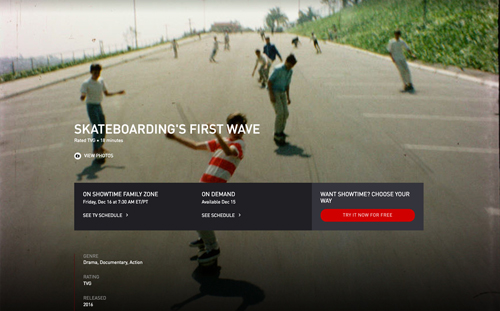
“Skateboarding’s First Wave” can be found for streaming on Showtime, although clips from media sources such as ABC had to be cut due to rights issues. The Showtime version is 18 minutes, four minutes shorter than the DVD, and worth every minute of watching. If you’re lucky, you may be able to find an unabridged DVD copy floating around the Palisades; Burgess manufactured and distributed a few hundred copies. It is a true feel-good film that will leave you informed and reminiscing on the 60s in sunny southern California.
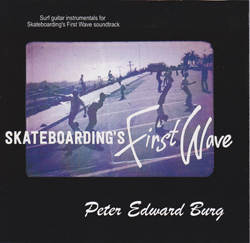
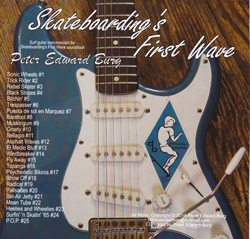
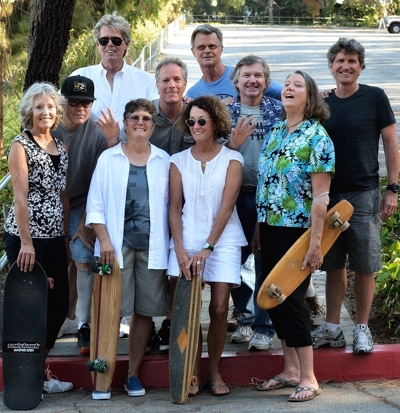
Palisades Skateboard Team reunion, summer 2014, for the making of the film
From left, front: Donna Cash Harris, Wendy Bearer Bull, Suzanne Levin (Suzie Rowland), Colleen Boyd Turner.
Back: Terry Keller, Tod (Elmergreen) Burton, Peter Burg, Tim Keller, Ric Burgess, Don Michael Burgess.
-- Get the whole story at the home page of "Skateboarding's First Wave" --
____________
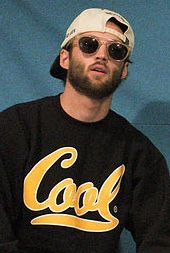
Writer Braden Walker is an avid skateboarder and co-founder of Gspot, a lifestyle and skateboarding brand and website.
Also, Braden is cool.
____________
Click here for information on PST member Peter Burg's soundtrack CD of instrumental surf guitar music created for Don Burgess's film "Skateboarding's First Wave."
____________
Photo credits:
Tim Keller riding atop trash can, competing in a dual meet at Palisades High School, 1966, photo by Jack Keller
Terry Keller nose-riding down the "bowl" at Kenter Canyon Elementary School, 1964, photo by Tim Keller
The Bench Files -- Tim Keller "hippy jump" at Palisades High School, 1965, from Skateboarding Annual 2, Germany, 2016 -- Screen grab from the film
2014 PST reunion photo at Palisades High School, photo by Tim Keller (using a tripod and timer)
____________